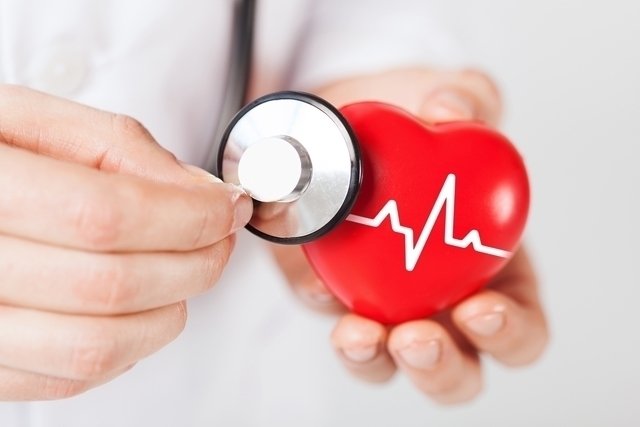Treatment after a heart attack must be guided by a cardiologist and may involve medications, such as anticoagulants and antihypertensives, thrombolysis and even surgery, to improve blood circulation to the heart, and must be carried out in the hospital due to the risk of complications such as arrhythmias and cardiac insufficiency.
It is important to know how to identify the first symptoms of a heart attack, such as severe chest pain, general malaise and a feeling of shortness of breath, especially after the first occurrence, so that the person can be taken to the hospital as quickly as possible, where they can be treated. and monitored to avoid serious complications and sequelae. Check out the symptoms that may indicate a heart attack.
Although there is no cure for heart attack, appropriate treatment can improve heart function after heart attack and prevent complications.

Treatment after a heart attack may involve:
1. Medicines
Anticoagulant medications such as acetylsalicylic acid (ASA) and clopidogrel may be indicated in the treatment of heart attacks to prevent the formation of clots and improve blood circulation to the heart. Furthermore, these medications also prevent the emergence of a new heart attack.
Other medications, such as antihypertensives and analgesics, may also be indicated to reduce the strain on the heart or in case of chest pain. However, in cases where the pressure becomes very low due to a heart attack, medications to control the pressure, such as epinephrine and norepinephrine, may be necessary.
In addition, after initial treatment, anticoagulant, antihypertensive and blood cholesterol control medications may be recommended for a period of several months or years, depending on medical advice.
2. Angioplasty
Angioplasty may be indicated to improve blood circulation to the heart in some cases of heart attack and is generally performed using a tube, called a catheter, which is placed in an artery in the leg or groin, allowing it to reach the blood vessel. affected by the clot and unblock the vessel. Understand better what angioplasty is and how it is performed.
The angioplasty catheter has a balloon at its tip, which is inflated to open the obstructed blood vessel, and in some cases a stent is placed, which is a small metal spring that helps prevent the vessel from closing again, causing a new heart attack.
3. Thrombolysis
Thrombolysis is a treatment that consists of the use of specific medications, such as alteplase and streptokinase, generally through injection to dissolve the clot that is obstructing the heart vessel and, thus, improve blood circulation.
4. Surgery
In some cases, it may be necessary to perform revascularization surgery, such as a saphenous bypass, which may be indicated when angioplasty is not sufficient to improve circulation or in the case of serious obstructions in the heart vessels.
In the case of a saphenous bypass, the surgery consists of removing a piece of the saphenous vein, located in the leg, to replace the obstructed part of the heart artery, making blood flow to the organ possible. Understand better how a saphenous bypass is performed and when it is indicated.
Physiotherapy after heart attack
Physiotherapy treatment after a heart attack, when indicated, is generally started in the hospital, after approval from the cardiologist, and may involve:
- Breathing exercises to strengthen the lungs;
- Muscle stretches;
- Going up and down stairs;
- Exercises to improve body conditioning.
The intensity of the exercises varies according to the phase of rehabilitation the patient is in. However, initially 5 to 10 minutes of exercise twice a day may be recommended, progressing until the person is able to exercise 1 hour a day, which usually happens around 6 months after the heart attack.
Care after a heart attack
After a heart attack, it is important to gradually return to daily tasks, being able to carry out activities such as driving and returning to work after medical authorization.
Generally, anticoagulant medications continue to be indicated after a heart attack and, depending on the severity and existence of diseases such as diabetes or hypertension, antihypertensive medications and medications to lower blood cholesterol may also be recommended.
Measures such as stopping smoking, losing weight and adopting a healthy diet are also important after a heart attack. Furthermore, it is important to remember that it is permitted to have intimate relationships normally, because the physical exertion of this activity does not increase the risk of having a new heart attack.
Is there a cure for a heart attack?
A heart attack cannot be cured, however, with appropriate treatment it is possible to improve the functioning of the heart and prevent complications such as heart failure, arrhythmias and even new heart attacks.
Furthermore, adopting measures such as a healthy diet, stopping smoking and performing physical activities regularly are also essential to prevent complications. See more measures to prevent heart attacks.

Sign up for our newsletter and stay up to date with exclusive news
that can transform your routine!
Warning: Undefined array key "title" in /home/storelat/public_html/wp-content/plugins/link-whisper-premium/templates/frontend/related-posts.php on line 12
Warning: Undefined array key "title_tag" in /home/storelat/public_html/wp-content/plugins/link-whisper-premium/templates/frontend/related-posts.php on line 13



